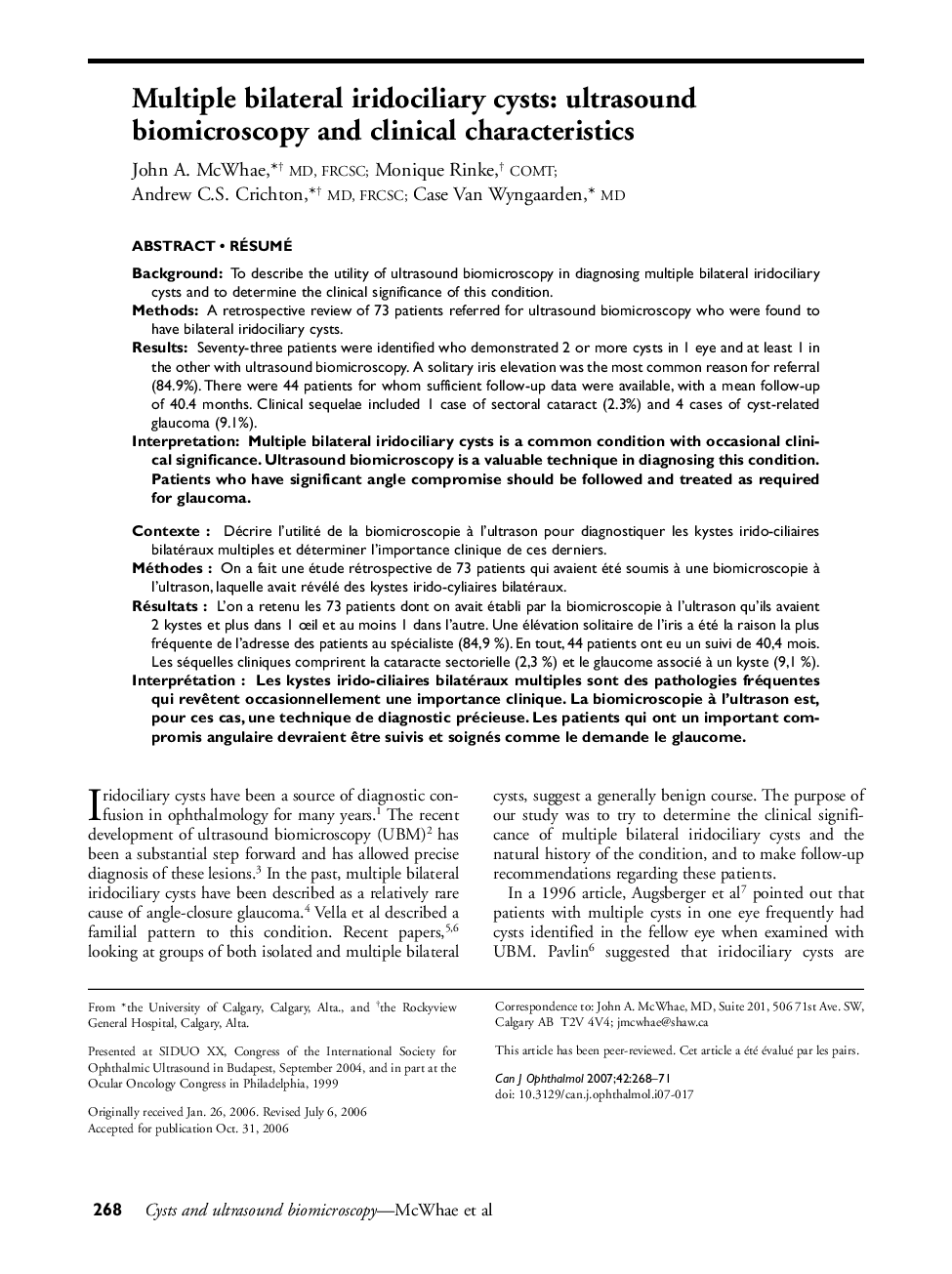| Article ID | Journal | Published Year | Pages | File Type |
|---|---|---|---|---|
| 4010757 | Canadian Journal of Ophthalmology / Journal Canadien d'Ophtalmologie | 2007 | 4 Pages |
Background: To describe the utility of ultrasound biomicroscopy in diagnosing multiple bilateral iridociliary cysts and to determine the clinical significance of this condition.Methods: A retrospective review of 73 patients referred for ultrasound biomicroscopy who were found to have bilateral iridociliary cysts.Results: Seventy-three patients were identified who demonstrated 2 or more cysts in 1 eye and at least 1 in the other with ultrasound biomicroscopy. A solitary iris elevation was the most common reason for referral (84.9%).There were 44 patients for whom sufficient follow-up data were available, with a mean follow-up of 40.4 months. Clinical sequelae included 1 case of sectoral cataract (2.3%) and 4 cases of cyst-related glaucoma (9.1%).Interpretation: Multiple bilateral iridociliary cysts is a common condition with occasional clinical significance.Ultrasound biomicroscopy is a valuable technique in diagnosing this condition. Patients who have significant angle compromise should be followed and treated as required for glaucoma.
RésuméContexte: Décrire l’utilité de la biomicroscopie à l’ultrason pour diagnostiquer les kystes irido-ciliaires bilatéraux multiples et déterminer l’importance clinique de ces derniers.Méthodes: On a fait une étude rétrospective de 73 patients qui avaient été soumis à une biomicroscopie à l’ultrason, laquelle avait révélé des kystes irido-cyliaires bilatéraux.Résultats: L’on a retenu les 73 patients dont on avait établi par la biomicroscopie à l’ultrason qu'ils avaient 2 kystes et plus dans 1 œil et au moins 1 dans l’autre. Une élévation solitaire de l’iris a été la raison la plus fréquente de l’adresse des patients au spécialiste (84,9 %). En tout, 44 patients ont eu un suivi de 40,4 mois. Les séquelles cliniques comprirent la cataracte sectorielle (2,3 %) et le glaucome associé à un kyste (9,1 %).Interprétation: Les kystes irido-ciliaires bilatéraux multiples sont des pathologies fréquentes qui revêtent occasionnellement une importance clinique. La biomicroscopie à l’ultrason est, pour ces cas, une technique de diagnostic précieuse. Les patients qui ont un important compromis angulaire devraient être suivis et soignés comme le demande le glaucome.
